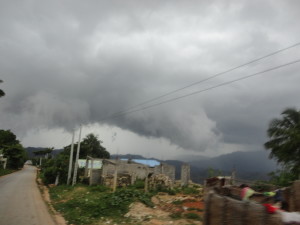
Maybe it’s this year’s El Niño, or maybe it is normal variation. Several reports from Haiti confirm that rain has been falling regularly since the end of January. I noticed the change while I was there through the first days of February. Also, the same is true of Southern Florida and the Bahamas.
Normally, the dry season in Haiti begins in early December and lasts through March, with an occasional cloudburst, but not much more than a quarter-inch falls.
This year, however, things are different. Two to three times a week a steady rain has fallen during the evening hours throughout most of February. It shows no inclination to stop in March. This means that the ground is retaining enough moisture to allow early planting of trees, some gardens, and to refill the earthen fish ponds located well into the mountains, which normally dry up during winter.
In Haiti, weather events, (mostly tropical storms and hurricanes) can set back the fragile Haitian economy for six months or more. The food supply is very dependent on completion of each of the several harvest seasons during the year.
So when a ‘bonus’ weather event comes, there is much rejoicing knowing the harvest will be a bounteous one. Because in Haiti, one never knows what other weather events loom in the future. Perhaps El Niño will bring disaster; perhaps not.
Such joys are what makes Haiti such a special place!